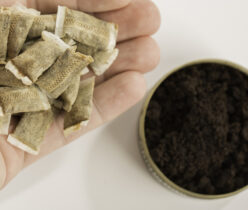The strong organ that assists us with talking, taste, and swallow has a specific look when it’s solid.
In the event that the eyes are the windows to the spirit, consider the tongue a kind of check-motor light for the body. The tongue’s appearance gives specialists a thought regarding specific parts of your wellbeing, and its tone is a significant hint.
What should your tongue resemble?
The tongue ought to have an adjusted, balanced shape. It’s for the most part light pink, however it might have a little purple or earthy colored pigmentation in African, Asian, and Mediterranean populaces. It can likewise have a smidgen of white covering.
“The covering comes from an extreme protein called keratin, which helps hold your tongue back from being scratched when you eat,” says Dr. Tien Jiang, a prosthodontist in the Division of Oral Wellbeing Strategy and The study of disease transmission at the Harvard School of Dental Medication.
Very close, you could possibly see that your tongue is canvassed in little knocks (papillae) that fill a few needs:
They sense temperature and contact.
They contain taste buds that empower you to recognize assuming food is sweet, pungent, acrid, severe, or exquisite.
They make erosion to assist you with shaping a little wad of food (bolus) that you can swallow.Will eat less influence tongue tone?
Indeed. Now and then diet might be mostly to fault for a shift away from your standard tongue tone. That is on the grounds that the papillae can retain the varieties and buildups of food sources and beverages you eat. For instance, that blue popsicle or candy you ate as a youngster most likely turned your tongue an interesting shade of sky blue. Espresso, tea, and many kinds of food sources, like curried dishes with bunches of yellow turmeric, can likewise make some meaningful differences.
Staining is generally transitory, notwithstanding. Drinking a lot of water and keeping up with great oral cleanliness will wash away food and colors that grip to the tongue.
A dim or splendid tongue, white patches, and different foundations for concern
Some tongue tones and appearances are indications of medical problems. Check with your PCP assuming that you notice any of the accompanying:
A brown or dark tongue flags a condition called "dark shaggy tongue." This happens when papillae get excessively lengthy. These little knocks don't for the most part get a lot of opportunity to develop in light of the fact that they are shed routinely with all the movement in your mouth. On the off chance that they do develop, they can trap microorganisms and a blend of food tones, prompting the brown or dark hint. Risk factors incorporate taking anti-microbials or allergy medicines, smoking, dry mouth, drinking unnecessary measures of espresso or dark tea, or unfortunate oral cleanliness.
Thick white fixes or white wounds on the tongue most likely mean you have an abundance of yeast in the mouth (thrush). Thrush can be set off by conditions like diabetes or HIV, symptoms of anti-toxins or disease treatment, wearing false teeth, smoking, dry mouth, or utilizing steroid inhalers. In uncommon cases, white patches or bruises are side effects of oral disease.
In the event that your tongue has excruciating red or yellow bruises, you may be managing blister (disturbed tissues), thrush (which can some of the time show up as red patches), or (in uncommon cases) oral disease.
A dazzling red tongue can demonstrate that you have a lack of vitamin B12 or a disease called red fever — a Streptococcus microorganisms contamination in the throat (strep throat) joined by a red body rash. On the off chance that you have radiant red fixes that don't do any harm and appear to relocate starting with one put on the tongue then onto the next, you could have an innocuous, hopeless condition called "geographic tongue."Would it be a good idea for you to brush your tongue or utilize a tongue scrubber?
Great oral cleanliness expects that you floss your teeth something like one time per day and brush them no less than two times per day. Require a couple of moments to utilize the brush on your tongue.
“Stick out your tongue and swipe your toothbrush from the rear of your tongue to the front: one swipe down the center, one swipe down the left side, and one swipe down the right side. That helps eliminate microscopic organisms and flotsam and jetsam that gather in papillae,” Dr. Jiang says.
Certain individuals depend on utilizing a tongue scrubber to clean the tongue. Dr. Jiang isn’t a fan, yet doesn’t disapprove of somebody utilizing the device, which is pulled forward on the tongue likewise to brushing the tongue. “The information about tongue scrubber adequacy are blended,” she says. “The main thing ultimately is the thing you’re willing to do everyday to keep your tongue, teeth, mouth, and gums as sound as could be expected.”
Stressed over your tongue? What to do
Assuming that you’re stressed over anything amiss with your tongue — particularly assuming that you likewise have a fever, an exceptionally sensitive throat, wounds that will not disappear, or other new side effects — call your essential consideration specialist or dental specialist.
Your PCP or dental specialist can
survey your condition
recommend or propose medicines to alleviate inconvenience, for example, cured mouthwashes or warm-water flushes
encourage you to remain hydrated and move forward your oral cleanliness.If fundamental, your PCP can allude you to an expert for additional assessment.


